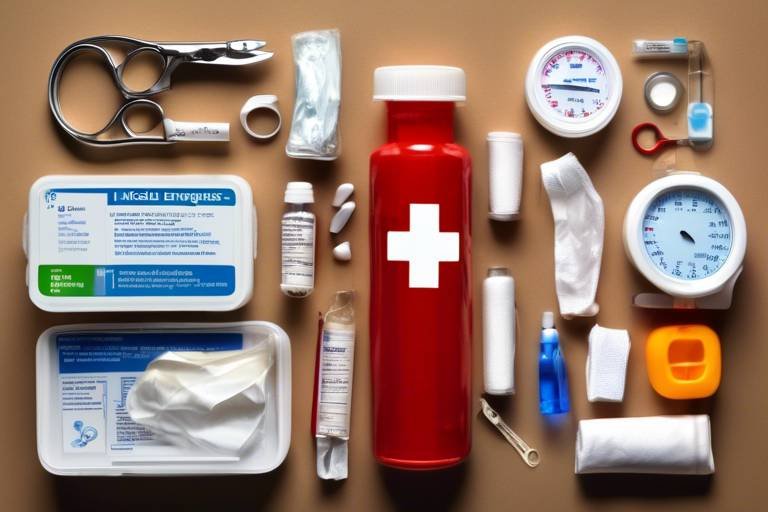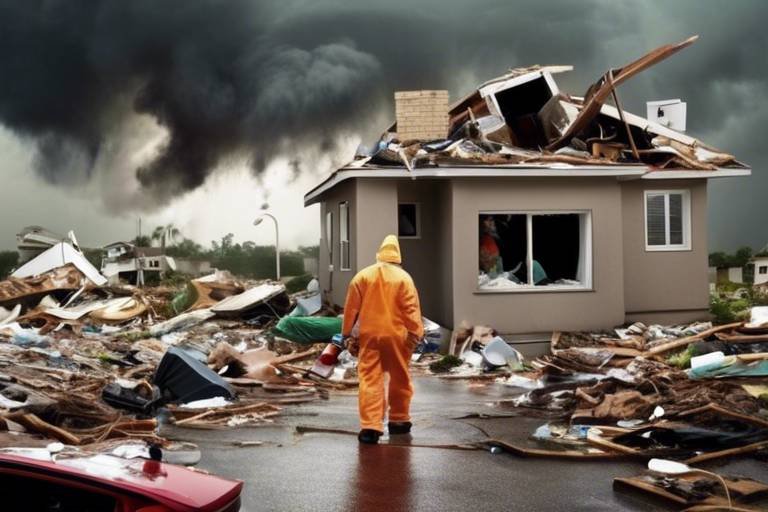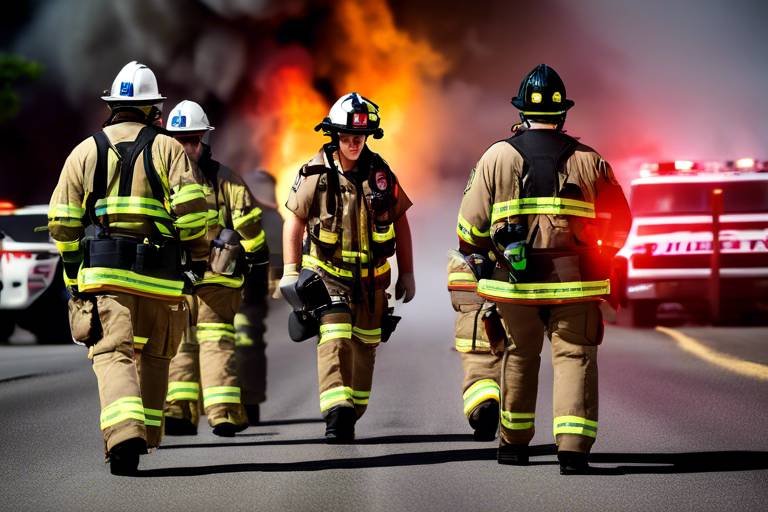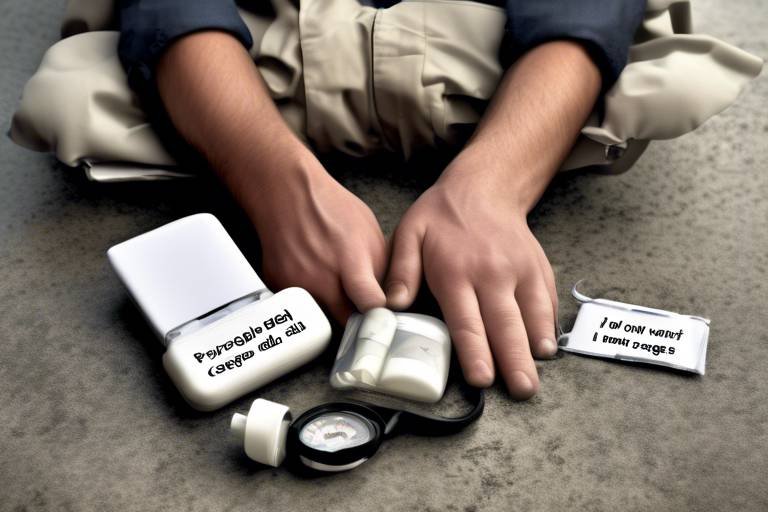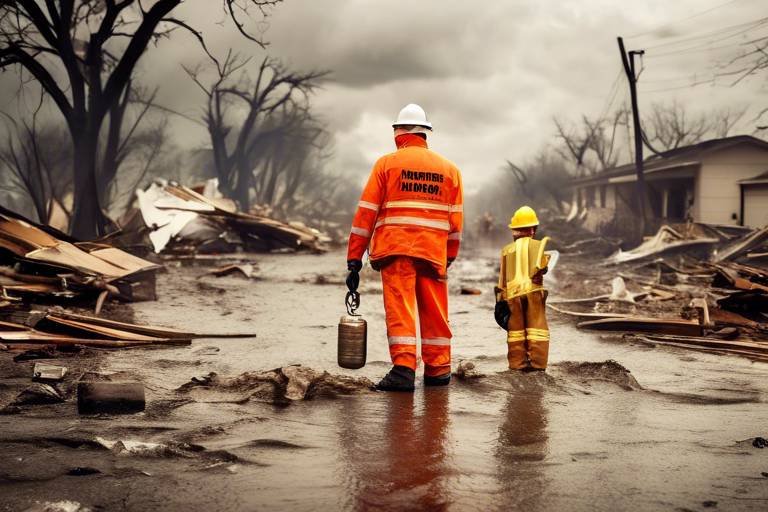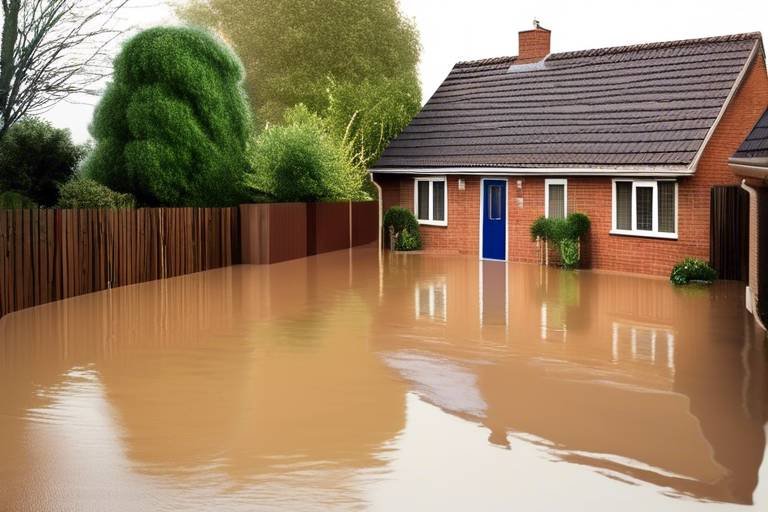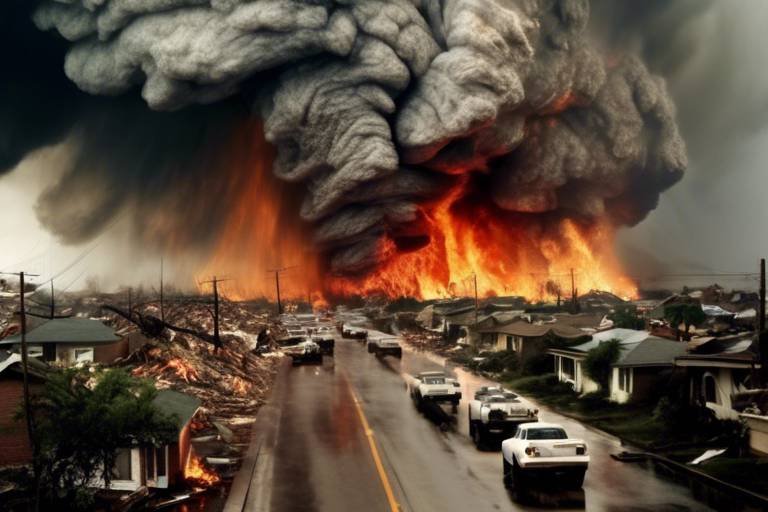Medical Emergencies - What Should be in Your First Aid Kit?
This article explores essential items to include in a first aid kit for medical emergencies, ensuring you are well-prepared to handle various situations effectively and safely.
Medical emergencies can occur unexpectedly, requiring immediate attention. Understanding the types of emergencies and their symptoms is crucial for effective response and preparedness in any situation. Picture this: you're at a picnic, enjoying the sun, when suddenly someone trips and falls, leaving them with a nasty gash. In moments like these, knowing what to do can mean the difference between a minor incident and a serious health crisis. By familiarizing yourself with common medical emergencies—like allergic reactions, heart attacks, or severe bleeding—you equip yourself to act swiftly and confidently.
A well-stocked first aid kit is vital for addressing injuries and illnesses. This section outlines the must-have supplies to include for various medical situations, ensuring comprehensive care. Think of your first aid kit as your personal health toolbox. It should be filled with items that not only address immediate needs but also provide peace of mind. From bandages to antiseptics, each component plays a critical role in your ability to respond to emergencies. Here’s a quick rundown of what you should have:
| Item | Purpose |
|---|---|
| Adhesive Bandages | Cover small cuts and scrapes |
| Gauze Pads | Control bleeding and protect larger wounds |
| Antiseptic Wipes | Clean wounds to prevent infection |
| Medical Tape | Secure dressings in place |
| Burn Cream | Relieve pain and promote healing |
Wound care items are fundamental in treating cuts, scrapes, and burns. This subsection details the necessary supplies to manage wounds effectively and prevent infections. Imagine you’re at a family gathering and someone accidentally gets a little too close to the grill. Having the right supplies on hand can turn a painful moment into a manageable situation. Here’s what you need:
Choosing the right dressings and bandages is essential for proper wound care. You wouldn’t wear flip-flops to a snowstorm, right? Similarly, using the right type of bandage for the specific injury is crucial. For instance, larger wounds may require gauze pads, while smaller cuts can be treated with adhesive bandages. Always ensure that your bandages are sterile and appropriate for the type of injury.
Antiseptics and ointments help prevent infections and promote healing. Here, we highlight the best options to include in your first aid kit for effective wound management. Think of antiseptics as your first line of defense against germs. Options like hydrogen peroxide or alcohol wipes can be lifesavers when it comes to cleaning wounds. Additionally, antibiotic ointments can speed up the healing process and keep infections at bay.
Having essential medications on hand can make a significant difference in emergencies. This section covers the key medications to stock in your first aid kit for immediate relief. Imagine you’re on a hiking trip, and someone starts complaining of severe allergies. Having antihistamines readily available can alleviate their discomfort and prevent a more serious reaction. Here’s a quick list of medications to consider:
- Ibuprofen for pain relief
- Antihistamines for allergic reactions
- Aspirin for potential heart issues
- Antacids for stomach discomfort
In addition to supplies, certain tools are crucial for effective emergency response. This section discusses the necessary tools to include for various medical situations. Think of these tools as your emergency toolkit—your trusty sidekicks in times of crisis.
A thermometer helps monitor vital signs, while scissors are essential for cutting bandages and clothing. This subsection explains the importance of these tools in your first aid kit. A thermometer can provide critical information about a person's health, especially in cases of fever. Scissors, on the other hand, can be a lifesaver when you need to quickly cut away clothing to assess an injury.
A CPR mask and gloves are vital for safety during resuscitation efforts. This part emphasizes the significance of these tools for protecting both the responder and the victim during emergencies. In a life-or-death situation, having a CPR mask ensures that you can perform rescue breaths safely, while gloves protect you from bodily fluids. These items are essential for anyone serious about being prepared for emergencies.
Q: How often should I check my first aid kit?
A: It’s a good idea to check your first aid kit every six months to replace expired items and restock supplies.
Q: Can I personalize my first aid kit?
A: Absolutely! Tailor your first aid kit to fit your lifestyle and activities, adding items specific to your needs.
Q: Where is the best place to keep my first aid kit?
A: Store your first aid kit in a cool, dry place that is easily accessible to all family members.

Understanding Medical Emergencies
Medical emergencies can strike at any moment, often when we least expect them. Imagine you're enjoying a peaceful picnic in the park when suddenly someone collapses or a child falls and injures themselves. The ability to respond effectively in these situations can mean the difference between life and death. Understanding the types of medical emergencies and their symptoms is not just a good idea; it's essential for everyone. So, what exactly constitutes a medical emergency?
In general, a medical emergency is any situation that requires immediate medical attention. This can range from traumatic injuries, such as fractures or deep cuts, to sudden illnesses like heart attacks or severe allergic reactions. Each type of emergency has its own set of symptoms, and recognizing these can help you act swiftly. For instance, if someone is experiencing chest pain, shortness of breath, or pain radiating down the arm, these could be signs of a heart attack. In contrast, if someone is having difficulty breathing after being stung by a bee, they may be experiencing anaphylaxis, a severe allergic reaction that requires immediate intervention.
It's also essential to consider the psychological aspect of emergencies. The shock and fear that accompany such situations can cloud judgment. Therefore, having a clear understanding of what constitutes an emergency can help you remain calm and focused. Here are a few common types of medical emergencies you should be aware of:
- Traumatic Injuries: Cuts, fractures, burns, and sprains.
- Cardiac Emergencies: Heart attacks, strokes, and arrhythmias.
- Respiratory Emergencies: Asthma attacks, choking, and allergic reactions.
- Poisoning: Ingestion of toxic substances or overdose.
By familiarizing yourself with these categories, you can better prepare for the unexpected. It's also a good idea to keep a list of emergency contacts handy, including local emergency services and poison control numbers. Knowing when to call for help is another crucial aspect of handling medical emergencies. Sometimes, the situation may not be as straightforward as it seems. For example, a person may appear to be having a panic attack but could be experiencing a more severe underlying condition.
Ultimately, the goal is to equip yourself with knowledge and tools to respond effectively. Whether it's knowing how to perform CPR, recognizing the signs of a stroke, or understanding the importance of keeping a well-stocked first aid kit, being prepared is your best defense against the chaos that can ensue during a medical emergency. So, take the time to educate yourself, and you'll be ready to act when it matters most.

Essential First Aid Kit Supplies
When it comes to handling medical emergencies, having a well-stocked first aid kit is like having a safety net ready to catch you when things go wrong. Imagine being in a situation where someone gets a nasty cut or feels faint; having the right supplies at your fingertips can be the difference between a minor mishap and a major crisis. So, what exactly should you include in your first aid kit? Let’s dive into the essentials!
First and foremost, you want to ensure your kit can address a variety of injuries and illnesses. This means stocking up on items that cater to different needs. Consider the following categories of supplies:
- Wound Care Items
- Medications
- Tools for Emergency Response
Each of these categories plays a crucial role in ensuring that you’re prepared for anything life throws your way. For instance, wound care items are fundamental in treating cuts, scrapes, and burns. You wouldn’t want to be caught off guard without the means to clean and dress a wound properly. But what does that entail? Let’s break it down further.
Wound care items are not just about sticking a band-aid on a cut; they’re about ensuring that the injury is treated properly to promote healing and prevent infections. Essential items in this category include:
- Dressing and Bandages: These come in various sizes and types, including adhesive bandages for minor cuts, sterile gauze pads for larger wounds, and elastic bandages for sprains. Choosing the right dressing is crucial, as it protects the wound from dirt and bacteria while allowing it to breathe.
- Antiseptics and Ointments: Antiseptics like alcohol wipes or hydrogen peroxide can help clean the wound, while antibiotic ointments like Neosporin can prevent infection and promote healing.
Now, let’s take a closer look at these items to ensure you understand their importance in your kit.
When selecting dressings and bandages, think of them as the armor for your skin. You wouldn’t send a knight into battle without proper gear, right? Similarly, your first aid kit should contain:
| Type | Use |
|---|---|
| Adhesive Bandages | For minor cuts and scrapes |
| Sterile Gauze Pads | For larger wounds |
| Elastic Bandages | For sprains and joint support |
Having a variety of dressing options ensures that no matter the injury, you’re well-equipped to handle it. It’s like having a toolbox with the right tools for any job!
Next up are antiseptics and ointments. Think of these as the magic potions in your first aid kit. They help cleanse wounds and speed up the healing process. Always include:
- Alcohol wipes or pads for disinfecting
- Hydrogen peroxide for cleaning
- Antibiotic ointments to prevent infection
Remember, keeping these items in your kit is essential for ensuring that any wound is treated properly. The last thing you want is for a small cut to turn into a big problem due to lack of care!
In addition to wound care, you’ll want to stock up on essential medications. These can be lifesavers in emergencies, providing immediate relief for common ailments.
Imagine you’re on a camping trip, and someone suddenly develops a headache or an allergic reaction. Having the right medications can be a game changer. Here are some key medications to consider:
- Ibuprofen or acetaminophen for pain relief
- Antihistamines for allergic reactions
- Adhesive bandages for minor injuries
By having these medications on hand, you’re not just prepared; you’re empowered to handle unexpected situations with confidence and care.

Wound Care Items
When it comes to handling injuries, having the right in your first aid kit can make all the difference. You never know when an accident might occur—whether it's a minor cut while slicing vegetables or a more serious scrape during an outdoor adventure. Being prepared with the necessary supplies not only helps in managing the injury effectively but also promotes faster healing and reduces the risk of infection.
So, what are the essential wound care items you should include? First and foremost, dressing and bandages are crucial. These come in various shapes and sizes, designed to protect the wound from dirt and bacteria while keeping it moist to aid healing. When choosing bandages, consider the type of injury. For instance, adhesive bandages are great for small cuts, while larger sterile gauze pads are ideal for bigger wounds. It’s like having a toolbox; you need the right tool for the job!
Along with bandages, don’t forget about antiseptics and ointments. These items are your first line of defense against infection. Antiseptics, such as alcohol wipes or hydrogen peroxide, help clean the wound before applying a dressing. After cleaning, applying a topical antibiotic ointment can further protect the area and promote healing. Imagine these products as your shield and armor, providing protection while your body does its healing work.
| Wound Care Item | Purpose |
|---|---|
| Adhesive Bandages | For small cuts and scrapes. |
| Sterile Gauze Pads | For larger wounds needing more coverage. |
| Antiseptic Wipes | To clean wounds and prevent infection. |
| Antibiotic Ointment | To promote healing and prevent infection. |
Remember, wounds can sometimes be more than just skin-deep. If you notice excessive bleeding or signs of infection—like redness, swelling, or pus—seek professional medical help immediately. It's essential to recognize when a situation is beyond your first aid kit's capabilities. Always trust your instincts; if something feels off, it’s better to be safe than sorry!
In summary, equipping your first aid kit with the right wound care items is not just a precaution; it's a necessity. A well-prepared kit can turn a potentially serious injury into a manageable situation. So, take a moment to review your supplies and ensure you're ready for whatever life throws your way!

Dressing and Bandages
When it comes to wound care, having the right dressing and bandages in your first aid kit is absolutely crucial. Think of these items as the protective armor for your injuries, shielding them from dirt, bacteria, and further damage. Just like a knight wouldn’t go into battle without their armor, you shouldn’t face a medical emergency without the proper supplies. So, what types of dressings and bandages should you include? Let’s dive into the essentials!
First off, you need a variety of sizes and types of bandages to accommodate different wounds. Here’s a quick breakdown of what you might want to consider:
| Type of Dressing/Bandage | Description | Use Case |
|---|---|---|
| Adhesive Bandages | Small, sticky bandages for minor cuts and scrapes. | Everyday injuries like paper cuts or small abrasions. |
| Gauze Pads | Absorbent pads that can be secured with tape or a bandage. | For larger wounds that require more coverage and absorption. |
| Elastic Bandages | Stretchy bandages that provide support and compression. | For sprains and strains to reduce swelling. |
| Burn Dressings | Specialized dressings designed to soothe and protect burns. | For any type of burn, from minor to more severe. |
It’s also important to remember that not all injuries are created equal. For instance, a cut on your finger might need a simple adhesive bandage, while a deeper laceration may require a gauze pad secured with medical tape. Having a range of options ensures that you can respond effectively to various situations. Additionally, consider the material of the bandages. Hypoallergenic options are great for those with sensitive skin, while waterproof bandages can be a lifesaver if you need to keep a wound dry while showering.
Ultimately, the goal of using dressings and bandages is to create an environment that promotes healing while protecting the wound from potential infections. It’s like putting a well-fitted lid on a pot of soup; it keeps the heat in and the contaminants out. So, as you prepare your first aid kit, don’t skimp on these essentials. They are your first line of defense in any medical emergency!
- What should I include in a basic first aid kit?
A basic first aid kit should include adhesive bandages, gauze pads, antiseptic wipes, adhesive tape, scissors, tweezers, and a thermometer. - How often should I check my first aid kit?
It's a good idea to check your first aid kit every six months to ensure that supplies are not expired and that everything is stocked up. - Can I use regular tape for bandaging?
While regular tape can work in a pinch, it's best to use medical tape as it is designed to be safe for skin and to hold bandages securely.

Antiseptics and Ointments
This article explores essential items to include in a first aid kit for medical emergencies, ensuring you are well-prepared to handle various situations effectively and safely.
Medical emergencies can occur unexpectedly, requiring immediate attention. Understanding the types of emergencies and their symptoms is crucial for effective response and preparedness in any situation.
A well-stocked first aid kit is vital for addressing injuries and illnesses. This section outlines the must-have supplies to include for various medical situations, ensuring comprehensive care.
Wound care items are fundamental in treating cuts, scrapes, and burns. This subsection details the necessary supplies to manage wounds effectively and prevent infections.
Choosing the right dressings and bandages is essential for proper wound care. This part discusses different types and their specific uses in various situations.
When it comes to treating wounds, play a crucial role in promoting healing and preventing infections. Think of them as the guardians of your skin, standing watch over the healing process. Antiseptics are designed to kill or inhibit the growth of harmful microorganisms, while ointments provide a protective barrier that aids in the healing of the skin. Having these products in your first aid kit is not just a good idea; it's essential for ensuring that minor injuries don’t turn into major health concerns.
In your first aid kit, you should consider including a variety of antiseptics and ointments. Here are some of the most effective options:
- Hydrogen Peroxide: Great for cleaning wounds, but use it sparingly as it can damage healthy tissue.
- Alcohol Pads: Excellent for disinfecting skin before injections or minor procedures.
- Antibiotic Ointment (like Neosporin): Helps to prevent infection in minor cuts and scrapes.
- Aloe Vera Gel: Perfect for soothing burns and providing moisture to the skin.
When applying these antiseptics and ointments, make sure to clean the wound first. This is akin to preparing a canvas before painting; you want a clean surface to work with. After cleaning, gently apply the ointment, covering the area adequately. Remember, a little goes a long way!
Moreover, always check the expiration dates on these products regularly. Using expired antiseptics can be as ineffective as using water instead of a fire extinguisher in an emergency. Keeping your kit updated ensures that you're always ready to tackle those unexpected moments when you need to act fast.
Having essential medications on hand can make a significant difference in emergencies. This section covers the key medications to stock in your first aid kit for immediate relief.
In addition to supplies, certain tools are crucial for effective emergency response. This section discusses the necessary tools to include for various medical situations.
A thermometer helps monitor vital signs, while scissors are essential for cutting bandages and clothing. This subsection explains the importance of these tools in your first aid kit.
A CPR mask and gloves are vital for safety during resuscitation efforts. This part emphasizes the significance of these tools for protecting both the responder and the victim during emergencies.
Q: How often should I check my first aid kit?
A: It's a good practice to check your first aid kit every six months to ensure all items are stocked and not expired.
Q: Can I use household items as substitutes in a first aid kit?
A: While some household items can be useful in emergencies, it's best to use items specifically designed for first aid to ensure effectiveness and safety.
Q: What should I do if I run out of antiseptics?
A: If you're out of antiseptics, clean the wound gently with soap and water, and cover it with a clean bandage until you can restock.

Medications to Include
When it comes to preparing for medical emergencies, having the right medications in your first aid kit can be a game changer. Imagine being in a situation where someone is suffering from severe pain, and you have nothing to offer. That’s why stocking up on essential medications is crucial. You want to ensure that you have the tools to address common ailments quickly and effectively. So, what should you include in your first aid kit? Let’s dive into the must-have medications that can make a significant difference in emergencies.
First and foremost, you should consider including pain relievers. Medications like ibuprofen or acetaminophen can help alleviate discomfort from headaches, muscle aches, or other minor pains. These over-the-counter drugs are usually well-tolerated and can provide much-needed relief. However, it’s important to follow the recommended dosages on the packaging. A little goes a long way, and you don't want to overdo it!
Next up, don’t forget about antihistamines. If someone in your group has allergies, having an antihistamine like diphenhydramine can be a lifesaver. Allergic reactions can escalate quickly, and having this medication on hand can help manage symptoms such as itching, hives, or even swelling. It’s like having a safety net for those unexpected allergic reactions that can catch you off guard!
Another crucial category of medications to include is antacids. Stomach issues can arise at the most inconvenient times, and having antacids like calcium carbonate or magnesium hydroxide can help ease discomfort from indigestion or heartburn. Picture this: you're on a camping trip, and someone indulges a bit too much at dinner. Antacids can help settle those rumbling stomachs and keep the good times rolling!
In addition to these, consider stocking a few topical treatments. This includes hydrocortisone cream for itching or inflammation and antibiotic ointment for cuts and scrapes. These topical treatments can be the first line of defense against infections and help soothe irritated skin. Having them in your kit is like having a shield ready to protect against minor injuries.
Here's a quick overview of essential medications to consider for your first aid kit:
| Medication | Purpose |
|---|---|
| Pain Relievers (Ibuprofen, Acetaminophen) | Relief from pain and discomfort |
| Antihistamines (Diphenhydramine) | Manage allergic reactions |
| Antacids | Relief from indigestion and heartburn |
| Topical Treatments (Hydrocortisone, Antibiotic Ointment) | Soothing inflammation and preventing infection |
Remember, it’s not just about having these medications; it's also crucial to check the expiration dates regularly. Medications can lose their potency over time, and you don’t want to find yourself in an emergency with expired products. Keeping your first aid kit stocked and up-to-date is essential for effective emergency response.
Lastly, consider including a small supply of any personal medications that you or your family members may need. Whether it’s a prescription for asthma inhalers or medications for chronic conditions, having these on hand can be critical in emergencies. It’s like having a personalized safety net tailored to your specific needs!
Q: How often should I check my first aid kit?
A: It's a good idea to check your first aid kit at least every six months to ensure that all items are stocked and that medications are not expired.
Q: Can I include prescription medications in my first aid kit?
A: Yes, absolutely! Including any necessary prescription medications is a smart move. Just make sure they are stored properly and are within their expiration date.
Q: What should I do if I run out of a medication?
A: If you find yourself running low on a medication, replenish it as soon as possible. Consider keeping a list of items to check off when you restock.

Tools for Emergency Response
When it comes to medical emergencies, having the right tools at your disposal can be the difference between life and death. Think of your first aid kit as a toolbox for health; just like a carpenter wouldn’t work without their hammer and nails, you shouldn’t face an emergency without essential tools. These tools not only help you provide immediate care but also ensure that you can manage the situation safely and effectively. So, what tools should you have ready? Let’s dive into the essentials.
First up is the thermometer. This small device is a powerhouse when it comes to monitoring vital signs. In emergencies, knowing a person's temperature can help you identify serious conditions like fever or hypothermia. Imagine being able to gauge someone’s health status at a glance! It’s crucial to have a digital thermometer in your kit, as they are quick and easy to read, giving you accurate readings in seconds.
Next on the list is a pair of scissors. You might be wondering why a simple pair of scissors is so important. Well, in an emergency, you may need to cut away clothing to access wounds or to remove bandages. Ordinary scissors might not do the trick; that’s why you should opt for trauma scissors, which are designed to slice through fabric and even seat belts with ease. These scissors can also help you create makeshift bandages from clean materials if you run out of supplies.
Now, let’s talk about personal safety during resuscitation efforts. Having a CPR mask and disposable gloves in your first aid kit is non-negotiable. These items are crucial for protecting both the rescuer and the victim. The CPR mask ensures that you can perform mouth-to-mouth resuscitation without direct contact, minimizing the risk of transmitting infections. Meanwhile, gloves protect your hands from blood or bodily fluids, keeping you safe while you provide care. It's a win-win situation!
To give you a clearer picture, here’s a simple table outlining these essential tools and their uses:
| Tool | Purpose |
|---|---|
| Thermometer | Monitor vital signs and detect fever or hypothermia. |
| Scissors | Cut clothing, bandages, or other materials as needed. |
| CPR Mask | Facilitate safe mouth-to-mouth resuscitation. |
| Disposable Gloves | Protect the rescuer from blood and bodily fluids. |
In addition to these core tools, consider including a flashlight in your kit. Emergencies don’t always happen during the day, and having a reliable light source can help you navigate dark spaces or assess injuries effectively. Also, a whistle can be a lifesaver in situations where you need to attract attention but can't shout. It’s small, lightweight, and can carry further than your voice.
Remember, the goal of your first aid kit is to empower you to act swiftly and confidently in emergencies. By having the right tools on hand, you’re not just prepared; you’re a hero waiting to happen. So, take a moment to check your kit, ensure these tools are included, and you’ll be ready to tackle any medical emergency that comes your way!
Q: How often should I check my first aid kit?
A: It's a good idea to check your first aid kit at least once every six months. This ensures that supplies are not expired and that you have everything you need in case of an emergency.
Q: Can I use regular scissors instead of trauma scissors?
A: While you can use regular scissors, trauma scissors are specifically designed for emergencies and can cut through tougher materials like clothing or seat belts more effectively.
Q: Do I need to take a first aid course?
A: Yes! Taking a first aid course can equip you with the knowledge and skills to use your first aid kit effectively. It’s always better to be prepared and know what to do in an emergency.

Thermometer and Scissors
This article explores essential items to include in a first aid kit for medical emergencies, ensuring you are well-prepared to handle various situations effectively and safely.
Medical emergencies can occur unexpectedly, requiring immediate attention. Understanding the types of emergencies and their symptoms is crucial for effective response and preparedness in any situation.
A well-stocked first aid kit is vital for addressing injuries and illnesses. This section outlines the must-have supplies to include for various medical situations, ensuring comprehensive care.
Wound care items are fundamental in treating cuts, scrapes, and burns. This subsection details the necessary supplies to manage wounds effectively and prevent infections.
Choosing the right dressings and bandages is essential for proper wound care. This part discusses different types and their specific uses in various situations.
Antiseptics and ointments help prevent infections and promote healing. Here, we highlight the best options to include in your first aid kit for effective wound management.
Having essential medications on hand can make a significant difference in emergencies. This section covers the key medications to stock in your first aid kit for immediate relief.
In addition to supplies, certain tools are crucial for effective emergency response. This section discusses the necessary tools to include for various medical situations.
When it comes to handling medical emergencies, having the right tools can be the difference between a minor incident and a serious situation. A thermometer is one of those essential tools that can provide critical information about a person's health. By measuring body temperature, you can quickly assess if someone has a fever, which is often a sign of infection or illness. Understanding temperature ranges can help you decide whether to seek further medical attention. For instance, a fever above 100.4°F (38°C) might require immediate care, especially in vulnerable populations such as children or the elderly.
Moreover, the scissors in your first aid kit are not just any ordinary pair; they are a lifesaver in emergencies. Whether you need to cut through clothing to access an injury or trim bandages to the right size, having a sturdy pair of scissors can make the process much smoother. It's important to choose scissors designed for medical use, as they often come with safety features, like rounded tips, to prevent accidental injuries during urgent situations.
To ensure you have the best tools at your disposal, consider the following table that outlines the types of thermometers and scissors suitable for your first aid kit:
| Tool | Type | Use |
|---|---|---|
| Thermometer | Digital | Quick and accurate temperature readings |
| Thermometer | Infrared | Non-contact temperature measurement |
| Scissors | Bandage Scissors | Cutting through clothing and bandages safely |
| Scissors | Trauma Shears | Durable scissors for tough materials |
In summary, a thermometer and scissors are indispensable tools in any first aid kit. They not only assist in assessing health conditions but also facilitate quick and effective treatment. So, the next time you prepare your emergency kit, make sure these items are included. It’s better to be safe than sorry!
- What should I include in a basic first aid kit?
A basic first aid kit should include bandages, antiseptics, pain relievers, scissors, a thermometer, and any personal medications you may need. - How often should I check my first aid kit?
It's a good idea to check your first aid kit every six months to ensure that supplies are stocked and not expired. - Can I use a regular thermometer instead of a medical one?
While a regular thermometer can be used, medical thermometers are designed for quick and accurate readings, making them more reliable in emergencies. - Why are scissors important in a first aid kit?
Scissors are essential for cutting clothing or bandages, allowing for quick access to injuries and facilitating effective treatment.

CPR Mask and Gloves
In the realm of medical emergencies, every second counts, especially when it comes to performing CPR. Having a CPR mask and gloves readily available in your first aid kit can be the difference between life and death. Let’s face it, the thought of performing mouth-to-mouth resuscitation on someone can be daunting, but with the right tools, you can feel more confident and safe while providing assistance.
A CPR mask is designed to create a barrier between you and the patient, minimizing the risk of transmitting infections. These masks are typically made of flexible plastic and come with a one-way valve that allows air to flow into the patient’s lungs while preventing any backflow. This means you can deliver breaths without the fear of inhaling any harmful substances or fluids. When you’re in a high-pressure situation, having this simple device can provide peace of mind.
Now, let’s talk about gloves. Wearing gloves during a medical emergency is crucial for both your safety and the patient's. They act as a protective barrier, shielding you from potential bloodborne pathogens or other infectious materials. It’s important to choose gloves that are durable and fit well, ensuring that you can perform tasks effectively without compromising dexterity.
Here’s a quick table highlighting the key features of CPR masks and gloves:
| Item | Key Features | Importance |
|---|---|---|
| CPR Mask | One-way valve, flexible material, easy to use | Protects rescuer, allows safe ventilation |
| Gloves | Durable, disposable, latex-free options available | Protects against infections, maintains hygiene |
When stocking your first aid kit, ensure that these items are easily accessible. You never know when an emergency might strike, and being prepared can save precious time. Additionally, it’s a good idea to regularly check the condition of your CPR mask and gloves, replacing them as necessary to ensure they are in optimal condition when you need them.
In summary, having a CPR mask and gloves in your first aid kit is not just a recommendation; it’s a necessity. They empower you to act swiftly and safely in a crisis, allowing you to provide life-saving assistance without compromising your health. So, as you prepare your kit, don’t overlook these essential tools—they could very well be your best allies in a medical emergency.
- Why is a CPR mask important? A CPR mask provides a barrier to reduce the risk of infection while allowing you to deliver breaths to a patient effectively.
- Can I use any gloves for CPR? It's best to use disposable, medical-grade gloves to ensure maximum protection against infections.
- How often should I replace my CPR mask and gloves? Regularly check your first aid kit and replace any expired or damaged items to ensure they are ready for use.
Frequently Asked Questions
- What should I include in my first aid kit?
Your first aid kit should include essential items such as adhesive bandages, sterile gauze pads, antiseptic wipes, tweezers, scissors, a thermometer, and a CPR mask. Don't forget to add any personal medications and a first aid manual for reference!
- How often should I check my first aid kit?
It's a good idea to check your first aid kit at least once every six months. This way, you can replace any expired medications, replenish supplies, and ensure everything is in working order. Think of it as a health check-up for your kit!
- Can I use regular household items in a first aid kit?
While some household items can be handy in emergencies, it's best to stick to items specifically designed for first aid. For instance, using duct tape for bandaging might not be safe or effective. Keep your kit stocked with proper supplies to ensure safety and effectiveness!
- How do I store my first aid kit?
Store your first aid kit in a cool, dry place that is easily accessible. Consider a waterproof container if you live in an area prone to flooding or dampness. Remember, the easier it is to grab, the faster you'll be able to respond in an emergency!
- Is it necessary to take a first aid course?
Absolutely! Taking a first aid course can provide you with the knowledge and skills to respond effectively during emergencies. It's like having a superhero cape; it empowers you to help others when they need it most!
- What should I do if I use items from my first aid kit?
After using any items from your first aid kit, be sure to replenish them as soon as possible. Keeping your kit stocked is crucial for being prepared for the next emergency. Think of it as recharging your superhero powers!

